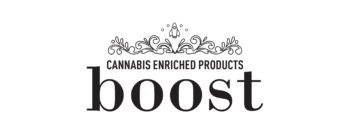News
Front-line health workers to receive pandemic pay top-up from government
[ad_1]
Health and social service workers delivering in-person, front-line care will receive temporary COVID-19 pandemic pay.
The cost share program with the federal government includes workers delivering a range of health and social services to people most vulnerable to COVID-19.
“From care aids to domestic violence workers, to people working in corrections and others delivering essential addictions and mental health supports, our front-line workers are providing vital support to people who are most vulnerable during the COVID-19 pandemic,” Finance Minister Carole James said in a release.
“Temporary pandemic pay recognizes all that our health and social service workers do to help keep people healthy, our communities running and deliver important care and services to the most vulnerable during this challenging time.”
More than 250,000 front-line workers are eligible for the lump-sum pandemic payment. The pay works out to $4 per hour for a 16-week period, starting on March 15, 2020.
Eligible workers will receive the payment directly through their employer and do not need to apply.
“People at the front lines of the pandemic are working tirelessly to keep us and our loved ones healthy, while also delivering services to the most vulnerable in our community,” James said.
[ Sign up for our Health IQ newsletter for the latest coronavirus updates ]
“This cost-shared program with the federal government will benefit thousands of British Columbia’s front-line health and social service workers.”
Money for pandemic pay will come from the government’s $5-billion COVID-19 Action Plan.
The bonus could add as much as $2,240 to a worker’s cheque.
If all workers are entitled to the full pandemic bonus then the program will cost $560 million.
As part of the cost sharing, the federal government will cover up to $401 million and the province will cover up to $239 million.
To be eligible, employees must have worked straight-time hours anytime during the 16-week period starting March 15, 2020. It does not apply to excluded management staff, fee-for-service providers or employees on leave.
The B.C. Government and Services Employees’ Union (BCGEU) is calling on the provincial government to expand the program to cover more essential frontline workers.
Thousands of BCGEU members have been left out of the program including those in public liquor and cannabis stores and warehouses, maintaining supply chains for the restaurant industry.
“The BCGEU pushed hard for this program to cover the broadest possible range of essential works and, as a result, B.C.’s program is significantly more inclusive than those in other provinces,” BCGEU president Stephanie Smith said.
“We’re happy that some of our lowest-wage members doing some of the highest-risk frontline jobs will be eligible. But the bottom line for us is that all frontline essential workers are shouldering an incredible burden in terms of increased cost, stress and inconvenience as well as increased risks to their emotional and physical health. All of these workers deserve recognition—not just some of them.”
Here is a list of who is eligible:
Eligible workplaces include
- Hospitals
- Long-term care and assisted-living facilities
- Provincial mental health facilities
- Provincially funded home and community care services
- Public health units
- Primary care clinics
- Diagnostic facilities
- Community clinics
- Diagnostic and treatment centres
- Community living: residential services and intervenor residential sites
- Indigenous services: delegated Aboriginal agencies, friendship centres providing critical services, and healing and wellness facilities and shelters
- Harm reduction: shelters for survivors of gender-based violence and human trafficking, directly operated residential facilities, adult-justice residential facilities, safe injection sites, emergency outreach harm reduction workers, emergency shelters, supportive housing facilities, respite and drop-in centres, temporary shelter facilities, and hotels and motels used for self-isolation or shelter overflow
- Youth services: high-risk youth services, youth justice residential facilities, licensed children’s residential sites
- Immigrant services: high-risk support services for immigrants and refugees, high-risk immigrant youth services and settlement services
- Ministry of Social Development and Poverty Reduction (SDPR) income assistance and disability reduction offices
- SDPR/Service BC integrated offices
- SDPR contact centre offices
- Ministry of Child and Family Development Service Delivery Division
- Service BC offices
- BC Housing main location and other offices
- Community Living BC head office and other local offices and Provincial Assessment Centre
- Adult correctional facilities and youth justice facilities
- Community corrections offices
- Sheriff Services Division.
© 2020 Global News, a division of Corus Entertainment Inc.
[ad_2]
Source link














